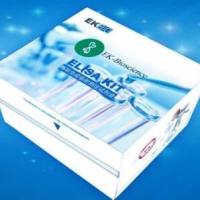High throughput calcium mobilization assays are extensively used for pharmacological characterization of GPCR ligands. These approaches, initially developed for Gq -coupled receptors, can be extended to Gi coupled GPCRs using chimeric G proteins. Here we used the Gαqi5 protein to force the nociceptin/orphanin FQ (N/OFQ) peptide (NOP) receptor, as well as the classical opioid receptors to signal through the PLC-IP3 -Ca2+ pathway in CHO cells. Calcium levels were monitored using the fluorometric imaging plate reader FlexStation II and the Ca2+ dye Fluo 4 AM. For investigating the pharmacology of the NOP receptor a panel of full and partial agonists and antagonists were assessed, while a small panel of agonists and antagonists was used for evaluating the pharmacological profile of opioid receptors. Some limitations of this assay and differences in the results obtained in comparison with those with Gi based biochemical assays are described. Overall, the present results confirm that the chimeric G protein strategy is useful for studying the pharmacological activity of Gi coupled receptor ligands and that the aberrant signaling does not produce any measurable change in the pharmacological profile of the receptor under study. Thus, this G protein strategy is extremely useful for setting up primary screening assays for NOP and classical opioid receptors and likely for other members of the GPCR family.






